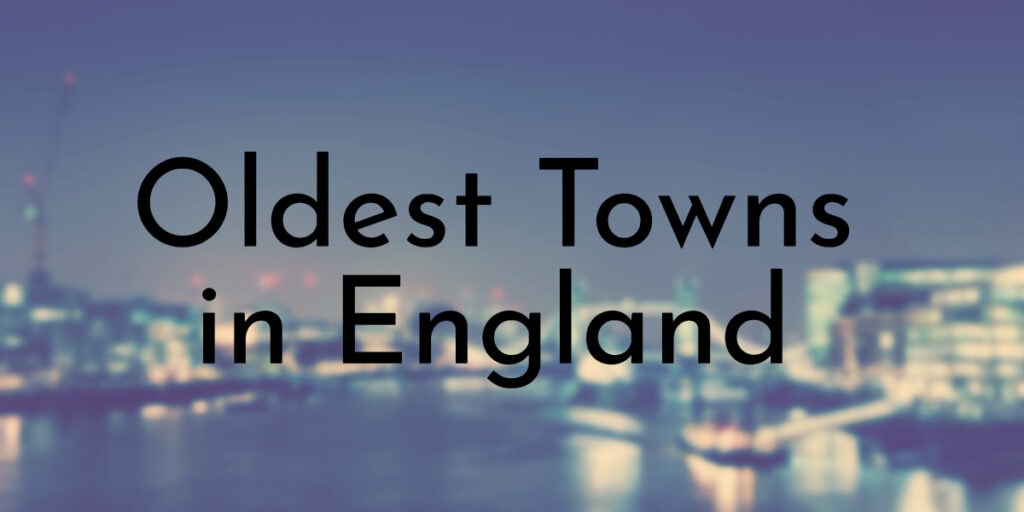England has a long and rich history of over a thousand years. The first modern human settlement was established in that area towards the end of the Old Stone Age. The place got its name from a Germanic tribe, Angles, who settled there during the 5th and 6th centuries. In the 10th century, England was incorporated as a unified state.
Presently England has 51 cities and 935 towns, many of which are centuries old. However, the exact dates of incorporation of these towns are often unavailable, and thus, it is almost impossible to determine their age.
Here we list 8 of the oldest towns in England. While compiling the list, we considered only those towns about which factual research is available. Thus, the list is inexhaustive, and there may be other towns in England that are even older.
8. Selby
Established: 11th century
County: North Yorkshire
Population: 14,731 (2011)
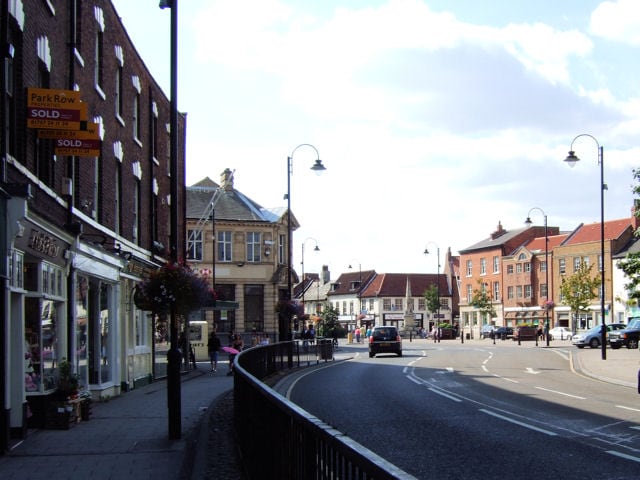 photo source: Wikipedia
photo source: Wikipedia
Selby is an old market town in England, the origin of which can be traced back to the late 8th century. The town was established during the Viking settlement on the banks of the river Ouse. It is believed that the town originated as a settlement called Seletun, which was mentioned in the Anglo-Saxon Chronicle of 779 AD.
The name Selby first appeared in a Yorkshire charter sometime around 1030 as Seleby. The town is the birthplace of King Henry I, son of William the Conqueror.
In 1069, monk Benedict from France requested William the Conqueror to grant him permission to build an Abbey at Selby after he saw three swans on a lake in Selby. Later, the town was developed around the Abbey.
Did you know?
Selby once had a thriving shipbuilding industry. Launching the vessels into the river in this area required a unique technique due to lack of space. They would launch it side-on into the river instead of using a conventional bow-first launch technique.
7. Lowestoft
Established: 11th century
County: Suffolk
Population: 73,800 (2019)
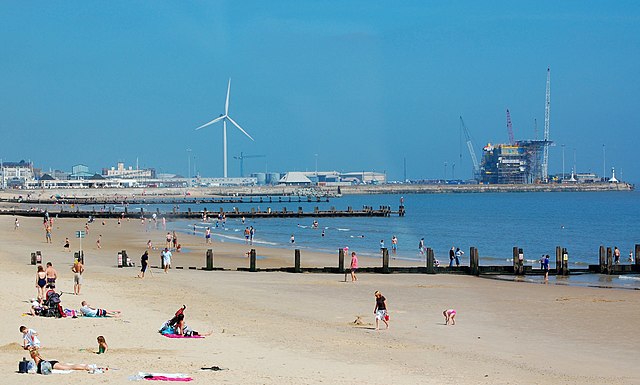 photo source: Wikipedia
photo source: Wikipedia
Lowestoft is the easternmost settlement in the UK. The town is located 110 miles northeast of England. It is a place where one of the earliest human settlements in England took place. In 2005, archaeologists discovered flint tools in the Pakefield cliffs in southern Lowestoft. It suggests that human habitation in the area dates back 7000,000 years.
Habitation continued to occur during the Neolithic, Bronze, and Iron ages and during the Roman and Saxon periods. Lowestoft was mentioned in the 1086 Domesday Book as Lothu Wistoft, a village of some 16 households.
The town of Lowestoft rose to be an important fishing town during the Middle Ages, and this trade continued to be the town’s primary identity into the 20th century. The town developed rapidly as a fishing port and seaside resort after the railway came in 1847.
Did you know?
Lowestoft is considered one of the most heavily bombed towns in the UK. During World War I, Lowestoft was heavily bombarded by the German navy. The town was again heavily bombed during World War II.
6. Ipswich
Established: 7th century
County: Suffolk
Population: 133,384
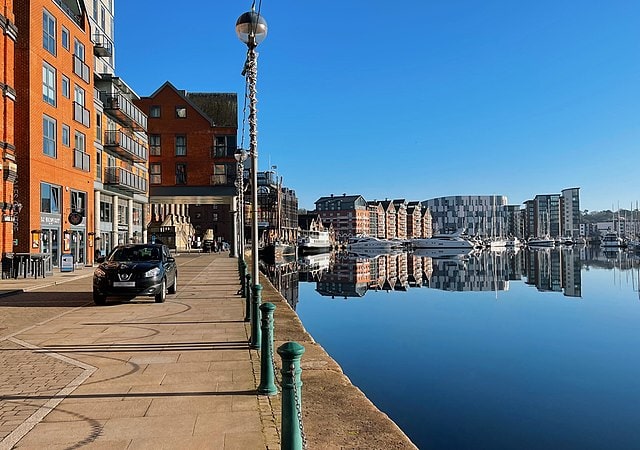 photo source: Wikipedia
photo source: Wikipedia
Ipswich claims to be the oldest still continuing town in England that was developed by the English. It is difficult to trace exactly when the town was established, but historical evidence shows the port of Ipswich (erstwhile Gippeswic) was founded during the early Anglo-Saxon period.
Before the modern town began taking shape, the area served as an important route to the rural settlements. Following the collapse of the Roman Empire, Gippeswic Port became one of the major ports for trade and communication between eastern Britain and the continent.
Medieval churches, Victorian buildings, and wonky Tudor houses in the town center of Ipswich bear testimony to the town’s long and rich history. It has become a major tourist attraction in the UK, with 3.5 million tourists reported to have visited the town in 2016.
Did you know?
Some historians believe the medieval name Gippeswic is probably derived from the name of the river Gipping, the river for the River Orwell, flowing through the county of Suffolk from Ipswich to Felixtowe.
5. Thatcham
Established: 7th century
County: Berkshire
Population: 25, 267 (2011 census)
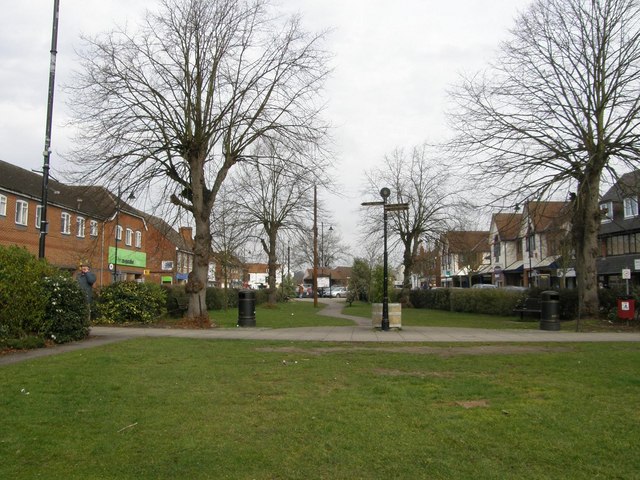 photo source: Wikipedia
photo source: Wikipedia
Thatcham is one of the oldest towns in England. In 1990, Thatcham was listed in the Guinness Book of Records as the strongest claimant to being the longest inhabited settlement in the UK.
Evidence shows human settlement occurred in this area during pre-historic times (10,000 BC – 4,000 BC). Later, Romans in this area. The modern town was developed by the Saxons.
According to the local beliefs, the town was established by a Saxon Chief named Tace. It was his settlement or ham, from where the name comes. The Domesday Book of 1086 mentions the name of the area as Taceham. During the following centuries, the name was slightly changed a few times, and finally, in the 16th century, the current name was adopted.
Did you know?
During World War II, one of the largest Prisoner of War camps in the south, known as camp 1001, was located in Thatcham.
4. Whitby
Established: 7th century
County: North Yorkshire
Population: 13,213 (2011)
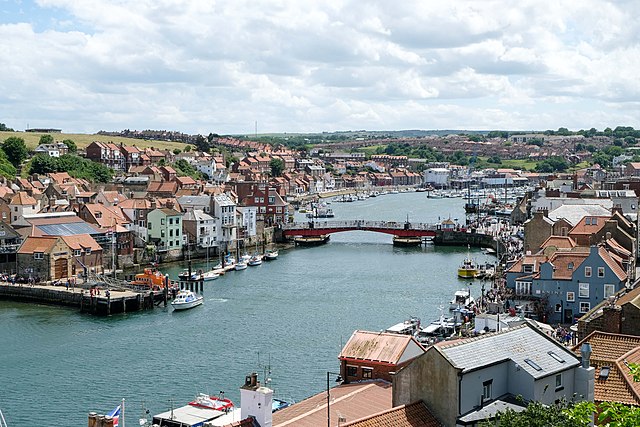 photo source: Wikipedia
photo source: Wikipedia
Whitby is an old seaside town and port in North Yorkshire. The town is divided by the River Esk into two parts; the east side is older. The earliest record of permanent settlement in this area can be traced back to 656 AD. It was when the Christian king of Northumbria, Oswy, founded the first abbey in this area.
However, the monastery was destroyed in 867 AD by the Viking raiders. Another abbey was built in 1078; this was when the town got its current name Whitby meaning white settlement in Old Norse.
Whitby has long been a fishing settlement and later developed as a port and hub for shipbuilding. During the Georgian period, it became an important tourist destination. Tourism further flourished after the arrival of the railway in 1839.
Did you know?
British explorer and navigator James Cook, famously known as Captain Cook, learned seamanship in Whitby.
3. Abingdon
Established: 7th century
County: Oxfordshire
Population: 33,130 (2011)
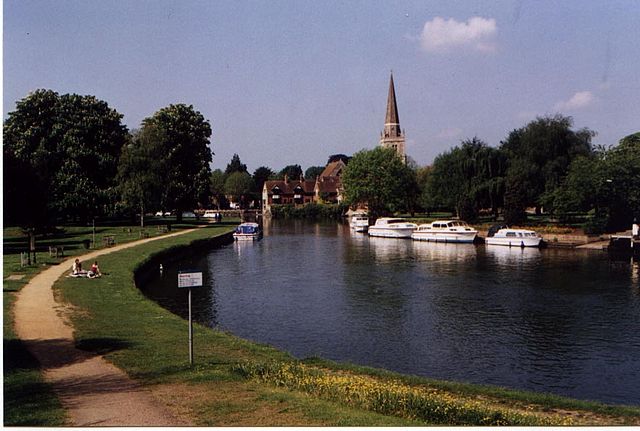 photo source: Wikipedia
photo source: Wikipedia
Abingdon-on-Thames, commonly known as Abingdon, claims to be the oldest town in England with a continuous settlement. Archaeological discoveries have confirmed that this area was inhabited during the Old, Middle, and New Stone Ages and the Bronze Age. It continued to be inhabited during the Roman Era. In 1991, remains of a Roman defensive enclosure of 33 hectares were discovered below the town center.
After the collapse of the Roman Empire, the Saxons took over the town and named it Sevekesham. The town got its name from a Benedictine Abbey founded sometime around 676.
Abington became an agricultural center during the 13th and 14th centuries and was an exporter of wool. Besides, it was also well-known for weaving and clothes manufacturing.
Did you know?
Most of the abbey was destroyed in 1538 after King Henry VIII closed the monasteries. A perpendicular gatehouse and several smaller buildings survived the destruction and still standing. The Checker Hall was later restored and turned into an Elizabethan-style theatre.
2. Amesbury
Established: 6th century
County: Essex
Population: 12,366 (2021)
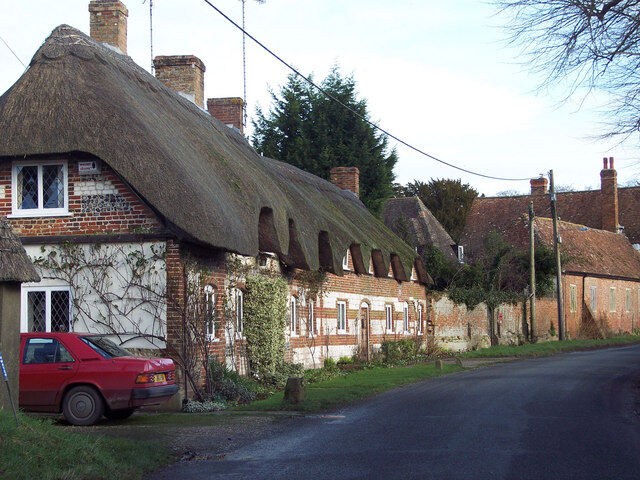 photo source: Wikipedia
photo source: Wikipedia
Amesbury is another British town that claims to be the oldest settlement in England. According to a project led by the University of Buckingham, the human settlement in this area dates back to 8820 BC. The claim is supported by the existence of prehistoric structures, including the monument of Stonehenge and Bluestonehenge.
A large hill fort was built alongside the Avenue during the Iron Age. It is now known as Vespasian’s Camp. The remains from Roman Era are not properly documented. However, the discovery of a large Roman graveyard and several other Roman structures confirms that the area was inhabited during Roman Era. It is believed that there was a big Romano-British settlement overlooking the River Avon.
Saxons came to this area in the 6th century and founded a settlement surrounding the old fort. Documents show King Alfred the Great, in his will, gave Amesbury to his youngest son Aethelweard (c. 880 – 922).
Did you know?
Old legends say Amesbury was established by King Arthur’s (the legendary British king) uncle Ambrosius Aurelianus.
1. Colchester
Established: 1st century
County: Essex
Population: 121,000 (2011)
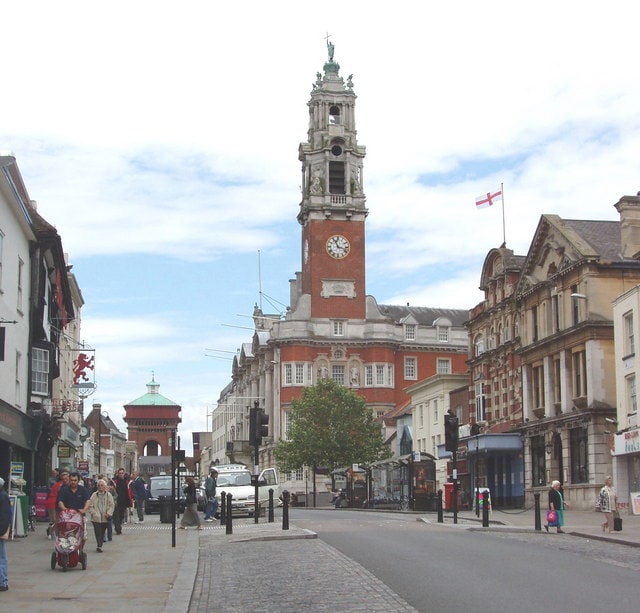 photo source: Wikipedia
photo source: Wikipedia
Colchester is the oldest town in England. During the Roman Era, the town was known as Camulodunum. It was the first provincial capital of Roman Britain. The reference to the town can be found in Natural History, written by the Roman writer Pliny the Elder in 77 AD. It is often considered the first known reference to a named settlement in Britain.
However, the origin of the town can be traced back to the Celtic tribal capital of Camulodunon, a name mentioned on coins minted by Tasciovanus as early as 20-10 BC. It was the most powerful Celtic kingdom in Britain during the first century AD. Roman Empire conquered the area in 43 AD under the empire, Claudius.
Did you know?
Colchester received city status on May 20, 2022, as part of the Queen’s Platinum Jubilee celebrations.


